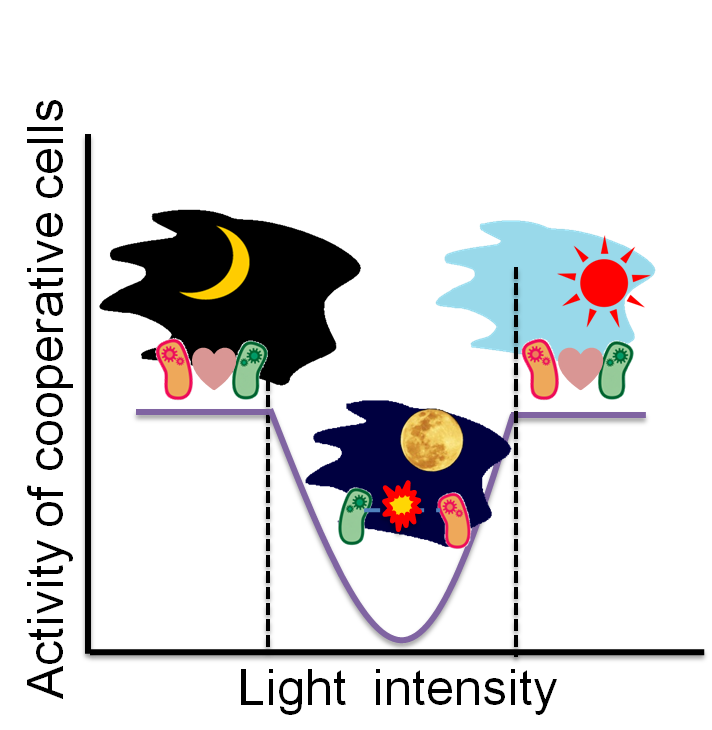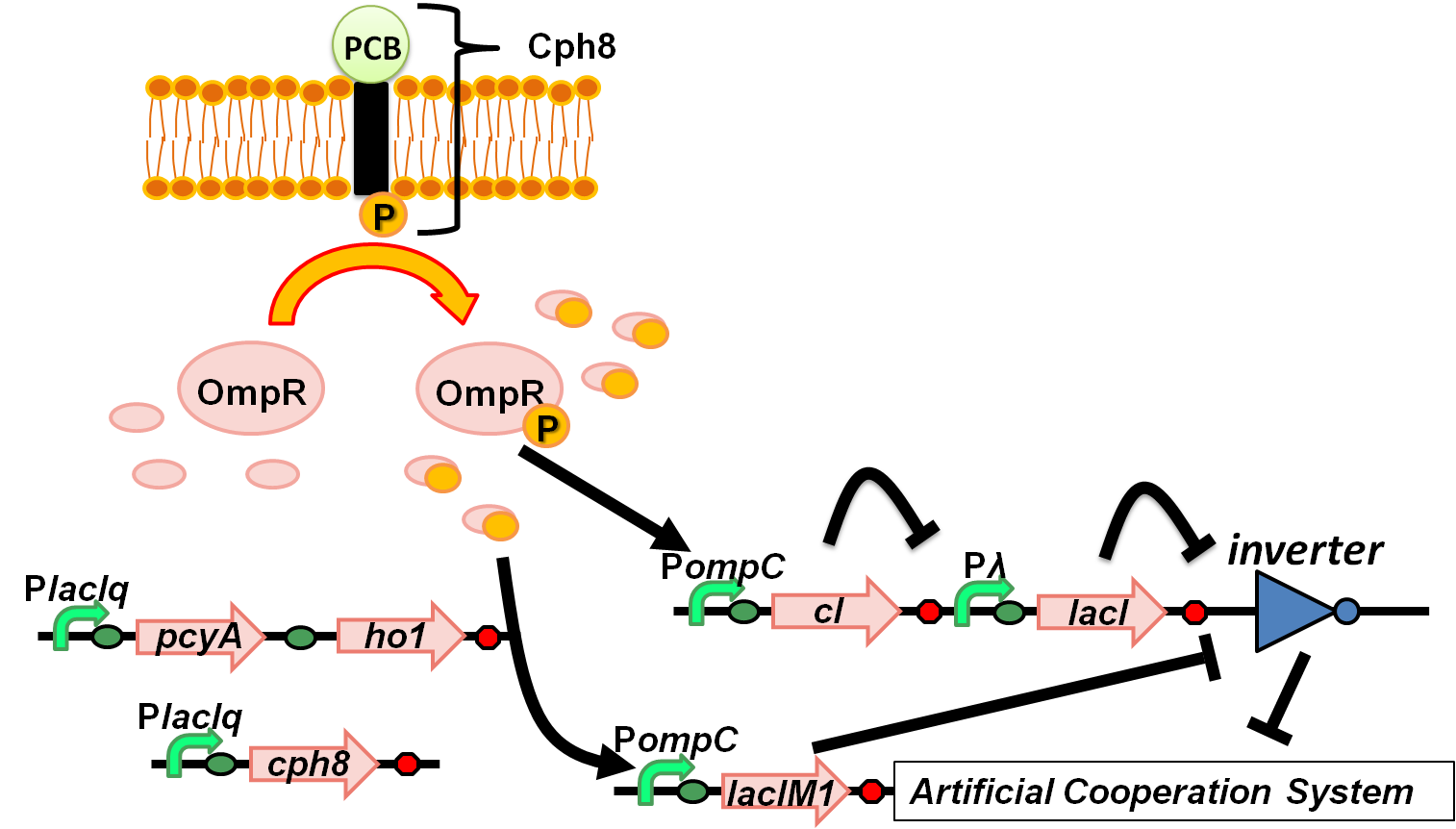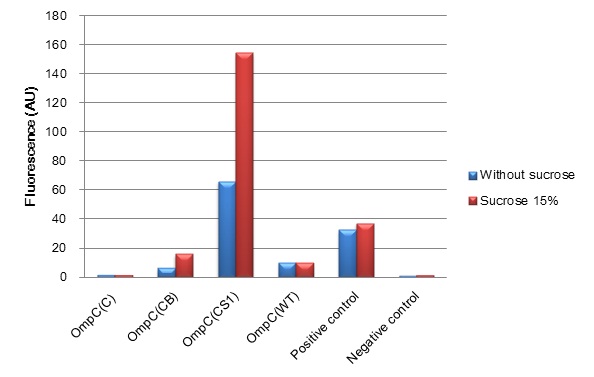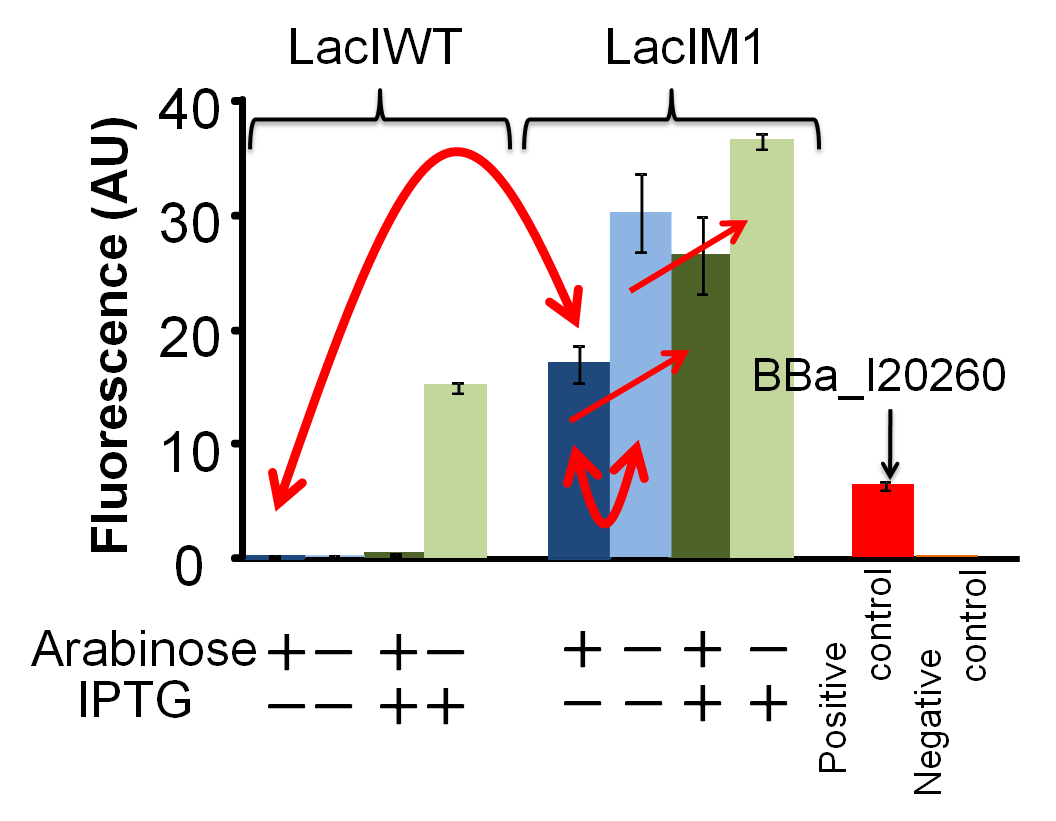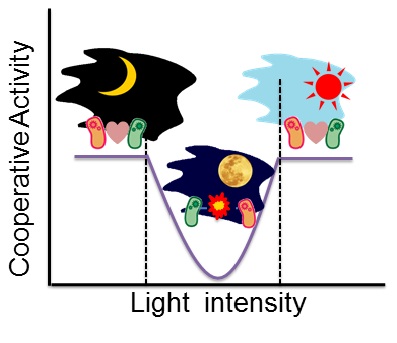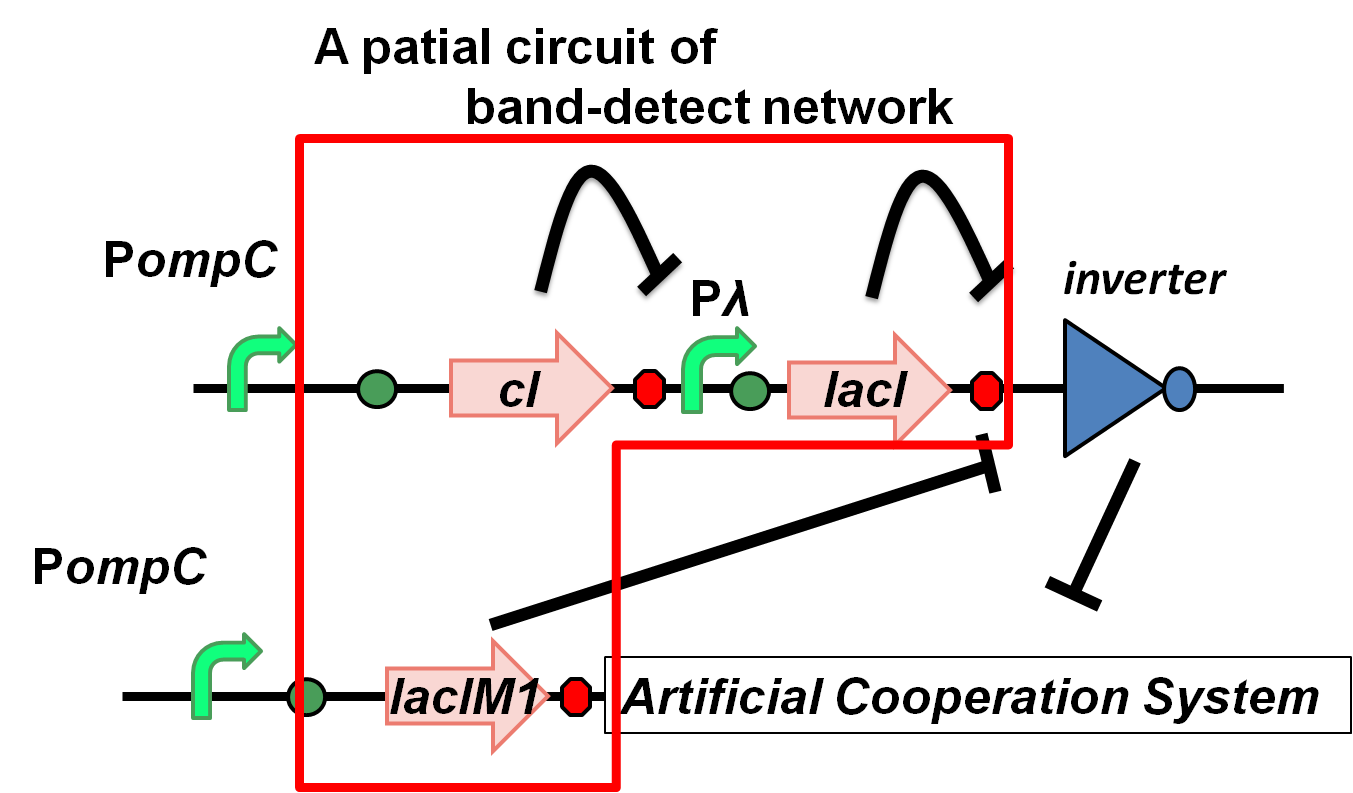Team:Tokyo Tech/Project/wolf coli
From 2010.igem.org
4 Wolf coli Overview
Contents |
Introduction
Have you heard the legend of 'The Wolfman'? They're ordinary man at daytime, but suddenly transform into a ferocious wolf in the full-moon night. Our project aim to imitate the character of Wolfman, more specifically, designing two types of E.coli that helps each other to survive at daytime, whereas competing at full moon night. In order to create the “Wolf coli”, we introduced " red-light-dependent gene expression network"[1] and "band-detect network"[2] into one cell, and combined these networks with the Artificial Cooperation System (Fig. 4-3). We characterized new series of OmpC promoter, and LacIM1 which are crucial parts of our networks.
We have succeeded in designing 2 new osmoregulative promoters, PompC(CB) [http://partsregistry.org/Part:BBa_K395302 (BBa_K395302)] and PompC(CS1)[http://partsregistry.org/Part:BBa_K395303 (BBa_K395303)], which can be utilized in the red-light-dependent gene expression network (Fig. 4-3). We also characterized LacIM1 [http://partsregistry.org/Part:BBa_K082026 (BBa_K082026)], a mutant of LacIWT,which is a key component in the band-detect network. Although, this part was registered by USTC(2008) [3], it was not well characterized in the BioBrick registry. We confirmed that LacIM1 shows weaker repression to Plac than its wild type. (Fig. 4-4)
Wolf coli. and Artificial Cooperative System
The Aftificial Cooperation System was designed to be switching off during the “full moon night”. Therefore, Sympathetic coli would be transformed into Wolf coli at the “full moon light”. During this period, communication between 2 types of cells is inhibited. Hence, both types of cells are unable to recognize each other by quorum sensing and become competitors. Cooperative activity in Artificial Cooperation System is regulated by 3 levels of light intensity which are weak, medium and strong. “Weak light” from the crescent moon enables the Artificial Cooperation System on, thus two types of cell are able to communicate and help each other. “Medium light” during the full moon night can switch the system off resulting in appearing of the “Wolf coli”. During the daytime, “strong light” from the sun activates the quorum sensing resulting in turning on of the Aftificial Cooperation System.
POmpC in red-light-dependent gene expression network
OmpC promoter, in red-light-dependent gene expression network, plays a crucial role in initiating the transformation of Sympathetic coli into Werewolf coli. To accomplish band-detect circuit in light sensening system, varieties of OmpC promoters were designed and characterized so as to find an appropriate strength of the promoter particularly which can be activated by the “full moon light”.(Fig.4-5)
...see more about OmpC promoter(Fig. 4-6)
LacIMI in band-detect network
The band-detect network exhibits transient gene expression in response to concentration of chemical signals(Fig.3-5). In the band-detect network, LacIM1 is a crucial component due to its low repression efficiency. According to the assay results, we confirmed that LacIM1 shows weaker repression to Plac than its wild type.(Fig. 3-2). (…see more about lacIM1).
 "
"
